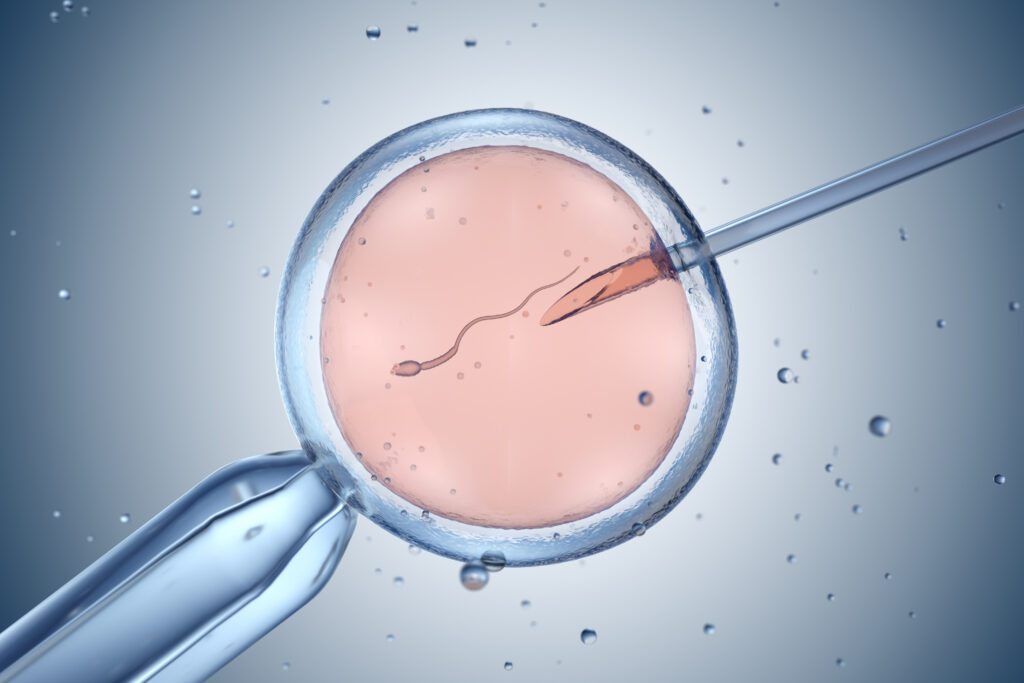From the Desk of CLI’s President: A Reflection One Year Post-Dobbs
As we mark the first anniversary of the Supreme Court decision in Dobbs v. Jackson Women’s Health Organization, one thing is clear: The debate the Supreme Court’s 5-4 majority invited by reversing Roe v. Wade is happening – and it is intense.
Some see this as a sign of ill health in our courts and in our democracy. And let’s acknowledge some of the reaction has been unhealthy: an assassination attempt on Justice Kavanaugh at his home, damage and destruction wreaked on scores of pro-life pregnancy help centers and on churches that provide or support free services to women, babies, and families. Reports of physical attacks and threats on abortion facilities and calls for arrest and incarceration of women who are subjected to abortion.
Despite these developments, I see the past year positively. For decades even modest limits on abortion – parental consent laws, limits on late-term abortion, informed consent provisions – were tossed aside by activist courts. It does not take long under such conditions for the habits of democracy to wither, and for the creation of public policy by autocratic demand or angry protest to take over. Instead, a new debate has been kindled, a fresh opportunity for a nation founded on the principle of God-given rights to reestablish those rights, through organization and persuasion.
For me, the right to life is a primary issue of human rights. The question of who holds the right to life, and what we owe to that rights bearer, is therefore a primary question of public policy. But it is at the same time an issue that precedes public policy.
Since the Supreme Court of the United States restored the correct interpretation of our Constitution one year ago, many in the media have gotten this issue profoundly wrong. They have treated the ruling in the Dobbs case, shamefully leaked by a partisan who considered himself or herself above the law, as a deviation from the story of ordered liberty. But this notion is historically and jurisprudentially false.
Roe v. Wade destroyed the child-protective laws of all 50 states. These were not just anti-abortion statutes but other policies that had been progressing, legally and medically, toward enhancement of the rights of the unborn. Where did the pervasive statutes stricken by Roe come from? If you listen to the other side, those laws were of recent vintage, the invention of religious extremists, opponents of women’s rights and antagonists of modern health care.
The exact opposite is true.
The great waves of pro-life protection in the states coincided with the national struggle over slavery and the enactment of constitutional amendments that underscored the principle that the proper criterion for possessing basic human rights was merely to be human. Legislators, predominantly Protestant and not Catholics, abolitionists, and medical associations joined forces to outlaw the practice of abortion.
This consensus was reinforced in the mid-19th century by the burgeoning feminist movement, led by Susan B. Anthony and her sister suffragettes, who spoke with crystal clarity about the harms of abortion and the men they saw exploiting it. Anthony famously said:
“I deplore the horrible crime of child murder….no matter what the motive, love of ease, or a desire to save from suffering the unborn innocent, the woman is awfully guilty who commits the deed; but oh! thrice guilty is he who … drove her to the desperation which impelled her to the crime.”
These developments in public policy harmonized with the ancient commitment undertaken by individual physicians from the time of Hippocrates. The Hippocratic Oath, dating to 400 BC, rejects both abortion and assisted suicide. This medical canon was obviously not the result of the kind of scientific understanding we have in the 20th century. Hippocrates had no ultrasound machine or fetoscope. His was a policy born of natural observation and human reason.
The calamity of Roe v. Wade, therefore, was not just an American anomaly but a worldwide disaster, one that was all the more ironic because it followed in the wake of the most horrific violations of human rights by the medical establishment in Nazi Germany.
How quickly we forget what impelled the action of the World Medical Association (WMA) in 1948. Sensitized to the violations of the sanctity of human life that occurred in World War II, the WMA added the Declaration of Geneva to the Hippocratic Oath as an expression of the duties of physicians under hostile political regimes. The 1948 text explicitly stated, “I will maintain the utmost respect for human life from the time of conception; even under threat, I will not use my medical knowledge contrary to the laws of humanity.”
This renewed sensitivity to human life before birth flowed in part from the history of the notorious Dr. Josef Mengele, nicknamed the Angel of Death, who subjected pregnant women to lethal experiments at Auschwitz. Mengele, who escaped prosecution after the war and fled to South America, was later reported by The New York Times as having carried on as an abortionist there in the 1950s.
The lessons of this dark chapter in world history affected our nation’s international posture for another generation. In 1977, the United States signed, though it has not yet ratified, the American Convention on Human Rights. Article 4(1) of the Convention says:
“Every person has the right to have his life respected. This right shall be protected by law and, in general, from the moment of conception. No one shall be arbitrarily deprived of his life.”
Yet that is exactly what Roe and its companion decision, Doe v. Bolton, did out of whole constitutional cloth. These rulings created the arbitrary, and movable, line of viability as the point when protections of the baby, minimal as they were, would be permitted. As the Roe and Doe opinions were being devised by Justice Harry Blackmun in 1972, the court considered making the line of protection earlier in pregnancy, citing 12 weeks as one option. “This,” Blackmun admitted to his colleagues, “is arbitrary, but perhaps any other selected point, such as quickening or viability, is equally arbitrary.”
The court was indeed “selecting a point” – the Constitution certainly did not contain one.
As the past half century since Roe v. Wade has revealed, the arbitrary elimination of life-affirming law has had devastating consequences. Nearly three decades ago, Mother Teresa of Calcutta spoke truth at the National Prayer Breakfast in the nation’s capital. She underscored that the issue of abortion would not remain about pregnancy alone. “Any country,” she proclaimed, “that accepts abortion is not teaching its people to love one another but to use any violence to get what they want.”
Can anyone not sunk in the slumber of indifference argue that respect for human life in our nation and in the world is on the rise? Have we achieved the golden promise that a country reserved, as Dr. Mildred Jefferson pointedly put it, for “the perfect, the privileged and the planned” has dawned in our midst? Instead, do we not see a toll of nearly one million abortions every year? Isn’t the story of our inner cities and even rural areas, weekend after weekend of mass shootings? Are we not losing 100,000 lives per year to the ravages of fentanyl? Hasn’t life expectancy fallen dramatically in recent years – declines of 4.0 years for Black Americans, 4.2 years for Hispanics, and 6.6 years for American Indian and Native Alaskan populations?
Hasn’t the United States seen its birth rate plummet to well below mere replacement level, with several Asian nations dropping to near or less than half of replacement? Our economists write of labor shortages – are they missing the simplest explanation: a shortage of people? Are we not seeing in some countries the “romance” of robots, artificial loves alongside artificial intelligence?
Abortion on request is not the solution to these tragedies, it is an engine of them. Now abortion will not even stop at birth. In the past few months, governors in two states have vetoed bills to guarantee equal medical care for children who survive abortion attempts. One of the vetoing governors, Laura Kelly of Kansas, defended her veto, saying, “Federal law already protects newborns, and the procedure being described in this bill does not exist in Kansas in the era of modern medicine.”
On how many counts can a statement be wrong? The era of “modern medicine” in Kansas now countenances elective abortion at any stage of pregnancy. The states and the federal Centers for Disease Control and Prevention do a poor job of collecting data on infants born alive after an abortion, but even that reporting shows these cases do occur. A Charlotte Lozier Institute analysis found that only eight states have publicly reported or responded to requests for statistics on children marked for abortion who were born alive:
Arizona, Arkansas, Florida, Indiana, Michigan, Minnesota, Oklahoma, and Texas. In the past few years, more than 100 babies were delivered alive during abortions. In just four of these eight states (Arizona, Florida, Minnesota, and Texas), 35 children were born alive during attempted abortions in 2020 and 2021. Additionally, Florida reported eight babies born alive in 2022. And these are not even the states with the most permissive abortion policies. Nor do we know what happened to these infants born struggling to survive.
Do liberal Democratic Governors who support civil rights law ever say, “Well, one law in this area is enough”? Do they veto new laws preserving voting rights or bills barring discrimination in housing or employment? And note here what they deny in other contexts – Gov. Kelly says there is a federal law protecting the child born alive, suggesting that federal action is appropriate. Good laws operate at every level in our federal-state system. Fortunately, the Kansas legislature overrode this inexcusable veto.
Advocates for mother and child, and yes, for fathers who should complete the picture of the family, have work to do. We are privileged in this democratic republic to have access to the levers of change.
I share the belief in the need for consensus. But consensus must be forged, not taken as it exists at any moment. In 1958, a decade before the Supreme Court handed down Loving v. Virginia striking down the Commonwealth of Virginia’s ban on interracial marriage, a national Gallup poll found that public support for such marriages stood at a paltry 4 percent.
Should that fact have marked the end of debate?
Americans are indeed conflicted about abortion – but at one time not so long ago they twice elected a liberal president who said he wanted to make the practice “rare.” They elected a liberal Democratic woman governor in Connecticut, Ella Grasso, who was pro-life to her bones. Gov. Grasso said, “I do not wish to be a party to the killing of the children of the poor.” They gave overwhelming support to Bob Casey Sr., twice elected governor of Pennsylvania, who said of defending the unborn, “Our mission as a people is to complete the circle of the protection of the powerless . . . all of the powerless in our society, especially the most vulnerable, defenseless and voiceless member of the human family, the unborn child.”
I believe the American people would happily end abortion if they can be persuaded it will not – because it does not – take draconian measures to do so.
Realism requires us to recognize that neither side in this divided nation has the power to enact its preferred policy in toto. But realism requires much more of us than a permissive status quo. The reality is that federal policy intersects with the fundamental question of the sanctity of human life in countless ways, and this intersection will never be empty. Today the federal Medicaid program pays for more than four of every 10 births in the United States. In some states, like Texas, the percentage is nearly half.
To judge the merits of this or any program, we must know who is eligible for its benefits – and whether the unborn child is encompassed in that circle. We must answer whether abortion is healthcare, or whether, instead, the baby in the womb is actually among the beneficiaries of the law.
The status of the unborn child is inherent in issue after issue at the federal level.
In 1997, for example, Congress adopted the Children’s Health Insurance Program, or CHIP, which allows the states to use federal funds under the program to exercise an “unborn child” option. This option finances health coverage for the unborn who is characterized as a “targeted low-income child” for purposes of this expanded insurance.
In 2004, Congress adopted the Unborn Victims of Violence Act, creating in federal criminal law an explicit recognition that the infliction of injury or death upon an unborn child is, as the law states, a “separate offense” than the one committed against the mother.
Congress directly finances health care for federal employees. It passed the Affordable Care Act and fought to the bitter end over whether to exclude coverage of abortion from subsidized insurance plans under the law. It was the last, decisive issue in the debate. Congress has the duty to set abortion policy in federal enclaves, for Department of Defense personnel and all federal employees, for the Indian Health Service, and now, incredibly, in our Veterans Affairs hospitals.
To what ought to be our everlasting shame, within one mile of the chambers where Congress meets, so-called physicians advertise and execute the abortion of babies well into the third trimester. The story is told of how the freed slaves held in the District of Columbia could be heard singing thanksgiving on the night in April 1862 when Lincoln signed the Emancipation Act. On abortion, Congress can and should ignite a new song for life in the womb.
Addressing these issues is within the enumerated powers and incumbent duties of the Congress. It is also a sheer necessity if we do not mean to abandon millions of the unborn to brutal deaths. If Congress fails to act, research shows that more than half the states will provide little or no protection for any child in their jurisdiction before birth. According to a Charlotte Lozier Institute analysis of reported abortions in states that are historically permissive of abortion, nearly 61 percent of the unborn – more than 616,000 human lives a year – will continue to be subject to the violence of abortion.
At the same time, we should attend to the evident needs of new mothers and fathers. Action in this area, including both federal and state investments, has gone largely unreported by what used to be called the MSM – the MainStream Media – but is now the ESM – the ExStream Media. It is not an exaggeration to say that the ability to protect the unborn child in law has spurred a concomitant willingness across the political spectrum to increase resources for women and young families.
Texas, which has acted strongly to protect life in the womb directly, has now upped to $140 million its spending over the next biennial budget for Alternatives to Abortion (A2A) programs for women. Similar expansions are happening in Florida, Mississippi, Tennessee, North Carolina, West Virginia, South Dakota and other states. States are putting money where the mothers are.
Meanwhile, federal measures like the Care for Her Act would create a clearinghouse of information on providers of pregnancy and parenting supports and services. The bill squarely faces and answers the question, “Who is one of us?” It would expand the child tax credit to include the baby in the womb, so women and families can claim this help in the first months that new expenses hit them. The reality of the child’s presence is affirmed.
It’s encouraging how much of this aid is receiving bipartisan support, especially at the state level. Thirty-six states including the District of Columbia have expanded postpartum coverage, up to 12 months, for mothers under the Medicaid program, and another dozen are either planning to implement such coverage, considering legislation to seek coverage expansion through existing mechanisms, or pursuing a more limited expansion.
Private and public resources are also expanding for one of the nation’s largest and most innovative voluntary efforts, the brilliant “points of light” called pregnancy help organizations. These entities raise somewhere between $750 million and $1 billion a year and provide a stunning array of services to women throughout pregnancy and beyond. Needless to say, physical and legislative attacks on these entities are unconscionable and must cease. As one woman among the millions who have benefited from the work of these organizations recently said of their work, “What a life change. I was given the tools I needed and the empowerment to make changes myself.”
Ask me then where lines should be drawn in this debate, and my best answer is that we should indeed seek to make abortion rare and ultimately a practice that is medically, morally, and socially obsolete. Let us save the lives of as many children as we can, recognizing these, our most vulnerable children, as our sons and daughters, our brothers and sisters. Let us, as Gov. Casey proclaimed, “complete the circle of protection” around these little ones. If we clasp our hands in this enterprise, with work and prayer, without rancor or rage, grounded in the promise of our much-blessed nation, how can we fail?
Charles A. “Chuck” Donovan is president of Charlotte Lozier Institute.




























